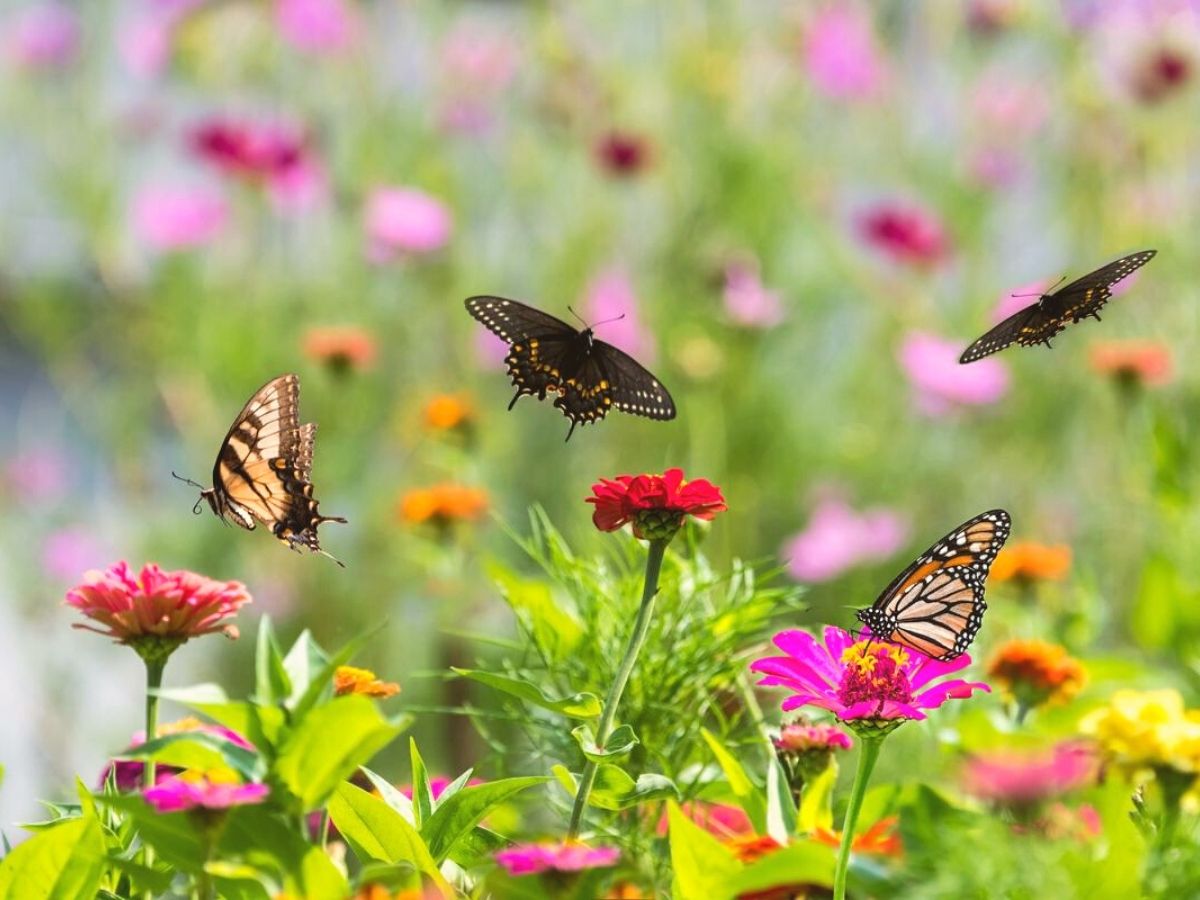Butterflies are not only beautiful to watch as they gracefully flutter through your garden but also serve as important pollinators for many plants. To invite these enchanting creatures into your outdoor space, consider planting annual flowers that are known to attract butterflies. In this article, we’ll explore five annuals that can help you create a butterfly-friendly garden.
**1. Zinnias (Zinnia elegans):
Zinnias are colorful, easy-to-grow annuals that are beloved by both gardeners and butterflies. Their vibrant, daisy-like blooms come in various shades, including red, orange, pink, yellow, and white. Butterflies, particularly species like the Monarch and Swallowtail, are drawn to the nectar-rich zinnia flowers. These flowers are not only beautiful but also serve as valuable food sources for adult butterflies.
**2. Cosmos (Cosmos bipinnatus):
Cosmos are delicate, daisy-like flowers that are known for their long-lasting blooms and feathery foliage. They come in various colors, such as pink, white, and purple. Cosmos are not only a treat for the eyes but also a treat for butterflies. Their sweet nectar is a favorite of many butterfly species, including the Painted Lady and the American Lady. Planting cosmos in your garden will provide ample opportunities for butterfly sightings.
**3. Lantana (Lantana camara):
Lantana is a heat-tolerant annual known for its clusters of small, tubular flowers that change color as they age. Common colors include yellow, orange, pink, and purple. These fragrant flowers are a magnet for butterflies, especially species like the Gulf Fritillary and the Giant Swallowtail. Lantana provides nectar and serves as a host plant for some butterfly caterpillars.
**4. Marigolds (Tagetes spp.):
Marigolds are a popular choice among gardeners due to their vibrant, sun-like blooms and pest-repelling properties. These hardy annuals come in various sizes and shades, including orange, yellow, and red. Butterflies, such as the Cabbage White and the Orange Sulphur, are attracted to the nectar-rich marigold flowers. Planting marigolds in your garden not only adds beauty but also supports local butterfly populations.
**5. Alyssum (Lobularia maritima):
Alyssum is a low-growing, fragrant annual with clusters of tiny, sweet-smelling flowers. They are available in shades of white, purple, and pink. While alyssum may be small, they are big favorites of butterflies like the Eastern Tailed-Blue and the Clouded Sulphur. These delicate flowers are perfect for border plantings and container gardens, where they can be enjoyed up close by both you and visiting butterflies.
Tips for Attracting Butterflies:
Plant in Groups: Butterflies are more likely to visit a cluster of the same flower type, so plant your chosen annuals in groups or drifts for a more attractive display.
Provide Sunlight: Most butterfly-friendly annuals thrive in full sun, so make sure your garden receives ample sunlight.
Avoid Pesticides: Avoid using pesticides in your butterfly garden, as they can harm not only pests but also beneficial insects like butterflies.
Include Host Plants: Some butterflies lay their eggs on specific host plants, so consider including these plants in your garden. For instance, Monarch butterflies rely on milkweed as a host plant for their caterpillars.
Keep Blooms Year-Round: To support butterflies throughout the season, choose a variety of annuals with different bloom times to provide nectar from spring to fall.
In conclusion, attracting butterflies to your garden can be a rewarding and beautiful experience. By planting these five annuals and following the tips for creating a butterfly-friendly garden, you’ll not only enjoy the vibrant colors and fragrances of your flowers but also help contribute to the conservation of these beloved pollinators. Your garden will become a haven for both you and the enchanting butterflies that grace it with their presence.
